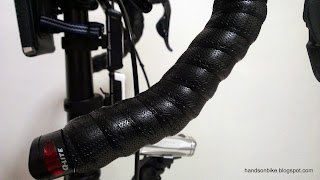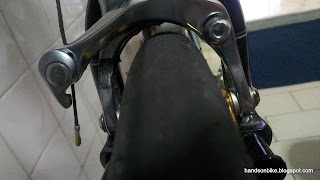Let's start with the feet. The feet are like your engine pistons, transferring your muscle power through the pedals to the bike. Therefore, the interface between the feet and the pedals is very important for good power transfer. For comfortable and good power transfer, the pedal platform should be large enough for your feet to step on comfortably, without feeling like the side of your feet are falling off the edge of the pedals.
For further power improvement, you can install clipless pedals and use clipless shoes. Click here to read more about SPD pedals and shoes!
Beginner's Guide to Clipless Pedals
Beginner Friendly SPD Pedals - Shimano PD-T400
Dual Platform Pedals for Versatility - Shimano PD-A530
Comfortable SPD Touring Shoes - Shimano RT-82
Next, we have the saddle. This supports most of your body weight, especially when you are pedaling at a leisure pace. It is difficult to recommend a suitable saddle for other people, especially when everyone's butt shape is different. The only sure way to find the right saddle is to try it out, and for at least a 5 km ride. Here is a couple of saddles that I tried before.
Rido LT Saddle for the speedster
Bontrager Evoke RL for all-rounded performance
Lastly, we have the hand contact points. There are two main types of handlebars, flat handlebar and drop bars. For flat handlebars, I find Ergon-style grips to be really comfortable as they support your palm and prevent numbness.
Ergon Grips 1
Ergon Grips 2
As for drop bars, the contact point for the hands would be the bar tape. There are so many types of bar tape out there, that it is difficult to know which one is good. From what I see, most bar tapes are pretty decent. As long as they can provide a decent grip, it should be fine. The quality shows only when you are installing or removing the bar tape.
Cheap bar tape use poor adhesives that leave sticky marks all over the handlebar and the bar tape itself. This makes removal a pain. They also tend to roll up at the edges, creating uncomfortable ridges.
Better bar tape would use good adhesives that don't leave a mark when they are removed, making it easy to put on fresh bar tape. The edges are also less likely to roll up. Thicker bar tape would make it more comfortable for the hands due to the additional cushioning available.
For myself, I have found the ideal bar tape. It is thick and comfortable, preventing numbness over longer rides. The grip is also very good, maintaining its tackiness even in wet conditions. I have been using it for about a year, and recently I decided to put on a fresh roll of the same bar tape.
The Lizard Skins DSP Bar Tape is unlike any other bar tape out there. Instead of being made of some synthetic fiber, cork or foam, it is actually rubber-like. This rubber material, together with its generous thickness, creates a bar tape that is very comfortable and grippy.
You can feel the rubber for yourself before you buy it!
Comes in 1.8mm, 2.5mm and also 3.2mm (new). Many colours are available!
Don't over stretch the bar tape when installing it, as you may tear the bar tape.
Comes with the finishing tape and also 2 small strips for taping the area behind the shifters.
Bontrager IsoZone Bar Padding for extra cushioning! Not necessary if you already have good thick bar tape. I just wanted to see how cushy I can make it.
Put the gel pads on the drop section...
...and also on the top of the drop bar.
However, I found that with the gel pads, the drop bar diameter becomes thicker, and the bar tape is not long enough to reach the top of the handlebar! This is also partly because I like to overlap the bar tape more at the bends, to prevent gaps from appearing when the bar tape shifts during normal usage.
To solve the problem, I decided to remove the gel pads on the top section of the handlebar, using only those on the drop section.
Bar tape is not long enough!
Re-wrapping the bar tape, with gel pads on the drop sections only. I don't use the short sections to tape behind the shifters, as it is unnecessary.
The finishing tape with the Lizard Skins logo! It has the same texture as the bar tape, which is a really nice touch.
Fully wrapped bar tape
Extra thick at the drop section for better comfort. Not really necessary, but good to have.
Freshly wrapped bar tape can really revitalize the bike! Makes the bike look and feel new again.
I highly recommend this bar tape for all users, as it is really grippy and comfortable, which is what you should be looking for in a bar tape. Not the cheapest bar tape around, but to me it is worth the money. No more numb hands!























































